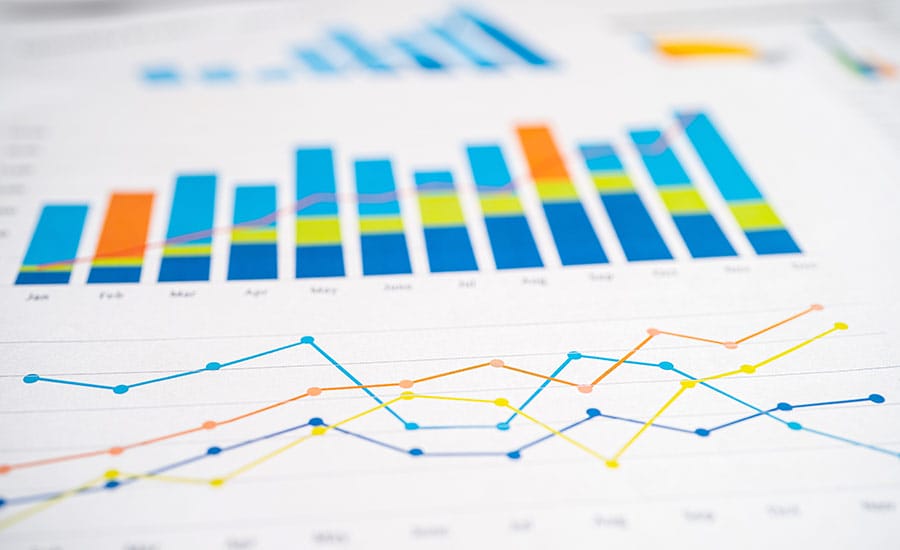Balance Sheet vs. Income Statement: What’s The Difference

Are financial statements confusing you and you don’t know how to read them?
When it comes to understanding your business’s financial health, the balance sheet and income statement are useful tools for analyzing your financial performance and position.
This blog post will break down the key differences between these two vital financial statements, give examples of how to read both of them and explain how Capixa can help you out in the process.
Balance Sheet Overview & Components
A balance sheet is one of the most essential financial documents for any business. It provides a snapshot of a company’s financial position at a specific point in time. If you’re able to understand a balance sheet, you can get a clear picture of what a company owns and owes, as well as the amount invested by shareholders.
The balance sheet follows a simple equation:
Assets = Liabilities + Equity
Components of a Balance Sheet
- Assets:
– Current assets: These refer to assets that are expected to be converted into cash within a year. Examples include cash, accounts receivable, and inventory.
– Non-current assets: These are long-term investments that are not expected to be liquidated within a year. Examples include property, plants, equipment, and intangible assets like patents. - Liabilities:
– Current liabilities: These are obligations that the company must pay within a year. Examples include accounts payable, short-term loans, and other accrued expenses.
– Non-current liabilities: These are long-term debts that are not due within a year. Examples include long-term loans, bonds payable, and deferred tax liabilities. - Equity:
– Shareholders’ equity: This represents the owners’ claim after all liabilities have been paid. It includes common stock, retained earnings, and additional paid-in capital.
Income Statement Overview & Components
The income statement, also known as the profit and loss statement, provides a summary of a company’s revenues, expenses, and profits over a specific period of time. This can include a month, quartal or the whole year.
Components of an Income Statement
Revenue:
- Sales revenue: The total amount earned from selling goods or services. This is often the top line of the income statement.
- Other income: Any additional income not directly related to core business operations, such as interest income or gains from asset sales.
Expenses:
- Cost of goods sold (COGS): The direct costs attributable to the production of the goods sold by a company. This includes the cost of materials and labor directly used to create the product.
- Operating expenses: These are expenses that a company incurs through its normal business operations. Examples include rent, utilities, and salaries.
- Selling, general, and administrative expenses (SG&A): Costs not directly tied to production, such as advertising, salaries of administrative staff, and office supplies.
- Depreciation and amortization: The allocation of the cost of tangible and intangible assets over their useful lives.
- Other expenses: Costs not related to core business operations, such as interest expense.
Profits:
- Gross profit: Calculated as Revenue minus COGS. It indicates how efficiently a company uses its resources to produce goods.
- Operating profit (EBIT): Earnings before interest and taxes, calculated as Gross Profit minus Operating Expenses. It shows the company’s ability to generate profit from its operations.
- Net profit: The final line of the income statement, calculated as Operating Profit minus Other Expenses (including taxes). This is the actual profit after all expenses have been deducted from revenue.
The Structure of an Income Statement
The income statement typically follows a structured format that includes the following key sections:
- Revenue
- Cost of Goods Sold (COGS)
- Gross Profit
- Operating Expenses (SG&A, Depreciation, etc.)
- Operating Profit (EBIT)
- Other Expenses (Interest, Taxes, etc.)
- Net Profit
The Difference Between Balance Sheets vs. Income Statements
While both the balance sheet and the income statement are crucial financial documents, they serve different purposes and provide distinct insights into a company’s financial health.
The main differences between balance sheets and income statements include:
Time Perspective
- Balance sheet: Provides a snapshot of a company’s financial position at a specific point in time. It shows what the company owns (assets) and owes (liabilities), as well as the equity invested by shareholders, on a particular date.
- Income statement: Provides a comprehensive overview of a company’s financial performance over a specific period, such as a month, quarter, or year. This statement shows how much revenue the company earned, the expenses it incurred, and the resulting profit or loss during that period.
Components and Structure Differences
Balance sheet:
- Assets: Divided into current and non-current assets
- Liabilities: Split into current and non-current liabilities
- Equity: Includes shareholders’ equity, retained earnings, and additional paid-in capital
Income statement:
- Revenue: Includes all income generated from primary business activities
- Expenses: Covers cost of goods sold (COGS), operating expenses, and other expenses like interest and taxes
- Profits: Measures gross profit, operating profit (EBIT), and net profit

Reading and Interpreting Financial Statements with Practical Examples
In this section, we’ll guide you through practical examples of both a balance sheet and an income statement to show how to interpret and analyze key financial information.
Example 1: Reading a Balance Sheet
Let’s consider the balance sheet of XYZ Company as of December 31, 2023:
XYZ Company Balance Sheet as of December 31, 2023XYZ Company Balance Sheet as of December 31, 2023
| Assets | Liabilities and Equity | ||
| Current Assets | Current Liabilities | ||
| Cash | $30,000 | Accounts Payable | $20,000 |
| Accounts Receivable | $25,000 | Short-Term Loans | $10,000 |
| Inventory | $45,000 | Total Current Liabilities | $30,000 |
| Total Current Assets | $100,000 | ||
| Non-Current Assets | Non-Current Liabilities | ||
| Property, Plant, and Equipment | $150,000 | Long-Term Debt | $70,000 |
| Intangible Assets | $50,000 | Total Non-Current Liabilities | $70,000 |
| Total Non-Current Assets | $200,000 | ||
| Total Assets | $300,000 | Total Liabilities | $100,000 |
| Equity | |||
| Common Stock | $50,000 | ||
| Retained Earnings | $150,000 | ||
| Total Equity | $200,000 | ||
| Total Liabilities and Equity | $300,000 |
Conclusion:
- Liquidity: XYZ Company has $100,000 in current assets and $30,000 in current liabilities, resulting in a current ratio of 3.33 ($100,000 / $30,000), indicating strong short-term financial health
- Financial stability: The company’s total assets ($300,000) are double its total liabilities ($100,000), showing a solid financial foundation
- Equity position: With $200,000 in equity, XYZ Company has a substantial buffer, suggesting a strong ownership stake in its assets
Example 2: Reading an Income Statement
Now, let’s read the income statement of XYZ Company for the year ended December 31, 2023:
XYZ Company Income Statement for the Year Ended December 31, 2023XYZ Company Income Statement for the Year Ended December 31, 2023
| Revenue | |
| Sales Revenue | $600,000 |
| Other Income | $20,000 |
| Total Revenue | $620,000 |
| Expenses | |
| Cost of Goods Sold (COGS) | $250,000 |
| Operating Expenses | $200,000 |
| Salaries | $120,000 |
| Rent | $50,000 |
| Utilities | $30,000 |
| Depreciation | $40,000 |
| Interest Expense | $10,000 |
| Taxes | $30,000 |
| Total Expenses | $530,000 |
| Net Profit | $90,000 |
Conclusion:
- Profitability: XYZ Company achieved a net profit of $90,000 on a total revenue of $620,000, indicating a net margin of approximately 14.5%
- Cost management: With a gross profit of $370,000 ($620,000 – $250,000), the company effectively manages its production costs. However, operating expenses consume a significant portion of revenue, emphasizing the need for efficient cost control
- Earnings: The operating profit (EBIT) is $130,000 ($370,000 – $200,000 – $40,000), showcasing the company’s ability to generate earnings from its core operations before interest and taxes

Schedule a Balance Sheet or Income Statement Consultation With Capixa
At Capixa, we understand that financial statements are crucial for the success of your business success.
Because of that, we take a personalized approach to helping you with financial statements, focusing not just on business funding but also on providing tailored cash flow solutions.
Our team of experienced business builders, problem solvers, and savvy investors is dedicated to helping you navigate the complexities of cash flow management.
If you’re looking for expert guidance on reading balance sheets and income statements or are interested in exploring small business loans or merchant cash advances as a part of your cash flow strategy, here’s how you can get started with Capixa:
- Apply: Begin by submitting a free online application. It’s straightforward, it won’t impact your personal credit, and there’s no obligation to accept our offer.
- Set up a consultation: Connect with your dedicated account manager. They will get in touch within an hour to understand your business’s unique cash flow needs, discuss necessary documentation, and explore terms that align with your goals.
- Wait for review: Once your application is submitted, our team will work swiftly to review your case within 6-12 hours of your application.
- Receive your funding: Upon approval, you’ll receive the funding you need. Our support doesn’t end here; return anytime you need additional financing to leverage new growth opportunities.
Schedule a consultation with our team and find out how we can help.

![What Is a Small Business Loan [How it Works + Types of Loans]](https://capixa.com/wp-content/uploads/2024/09/what-is-a-small-business-loan-hero-image.jpg)
